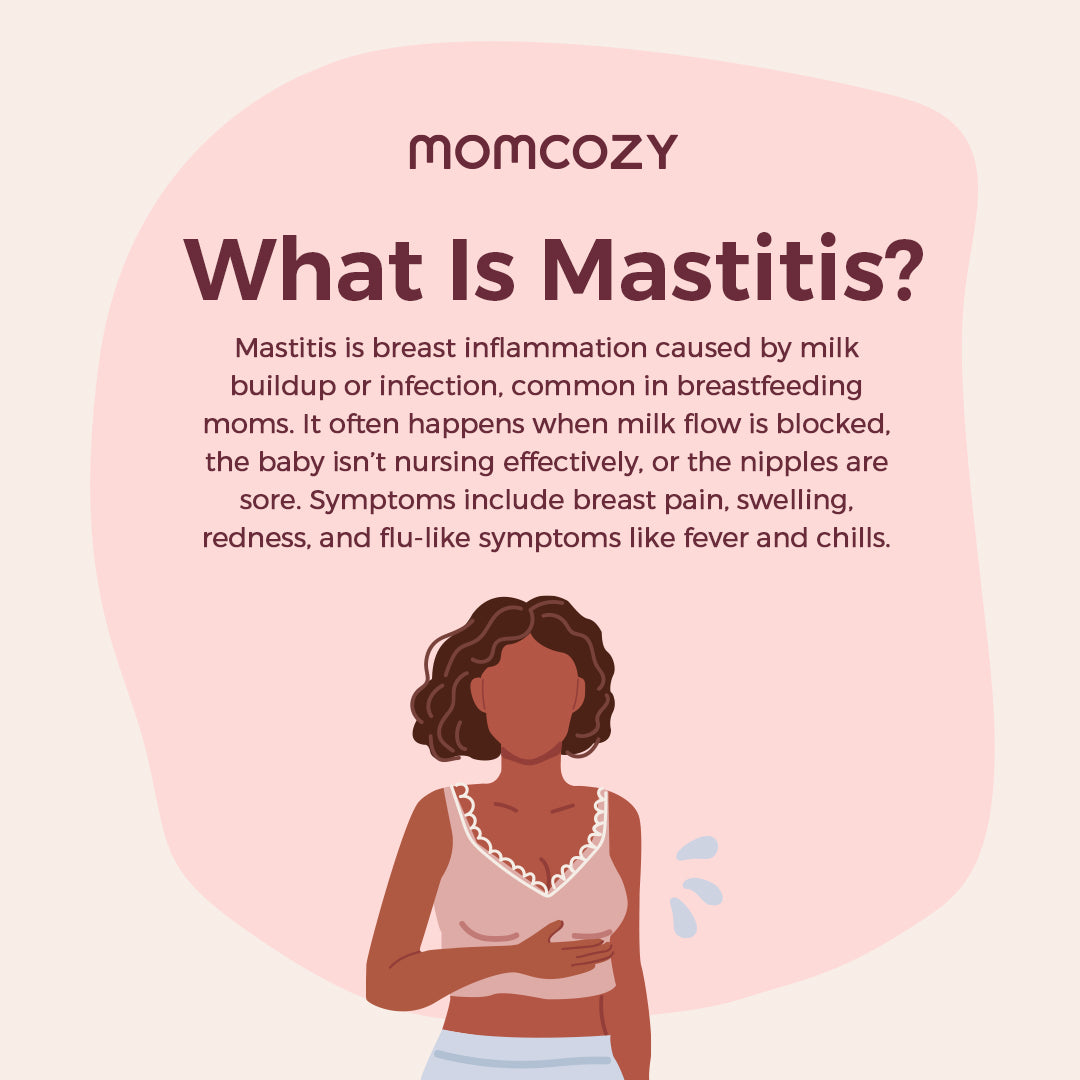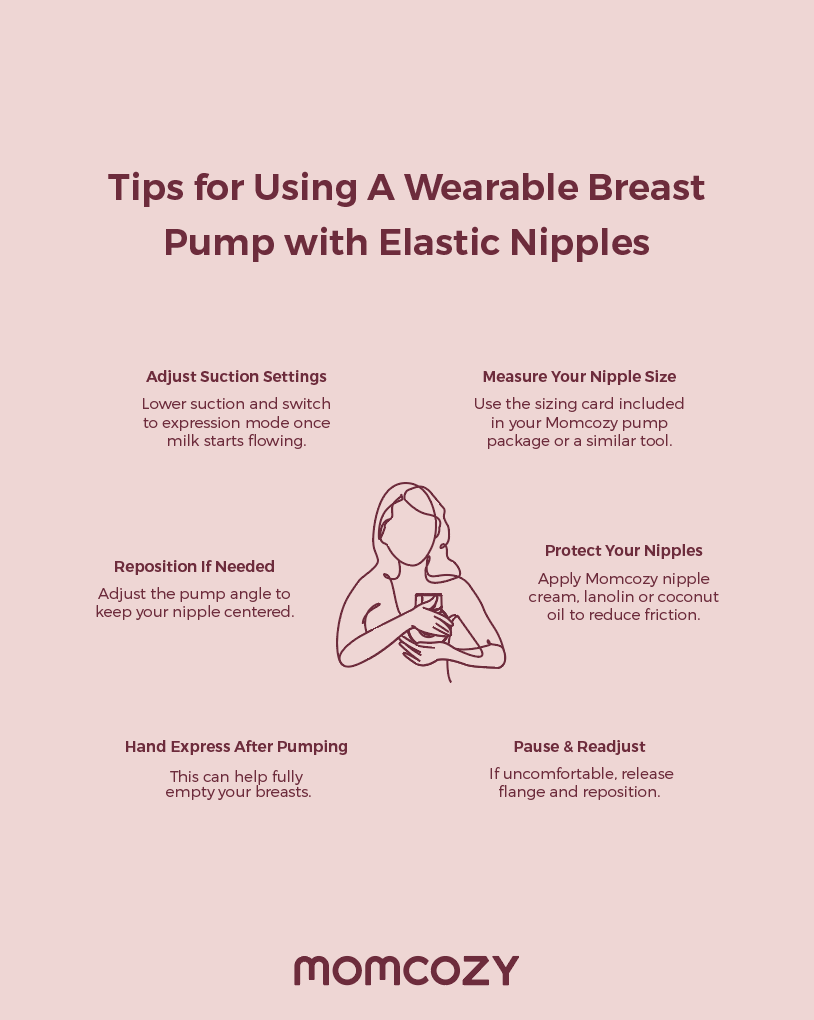

Motherhood is never easy, which is why we’re here to help.With our toolkit for breastfeeding moms, you can take control of your wellness through the power of learning. Check out the toolkit, take care of yourself, and live a cozy life.
Dealing with issues surrounding breastfeeding - i.e. what to do about too much/too little breast milk, how to store breastmilk, breast milk production, bottle feeding, etc.

We endeavor to answer the breastfeeding questions we hear the most.

When it came to getting my new baby to latch for the first time, it wasn’t so easy...

We share everything you need to know about stopping breastfeeding and the different.....

There are some easy tips and tricks that mothers can follow to make breastfeeding painless while traveling.
Dealing with issues surrounding pumping- i.e. how to pump in public, how to establish good suction, etc.

Mastitis is breast inflammation caused by milk buildup or infection, common in breastfeeding moms. It often happens when milk flow is blocked, the baby isn’t nursing effectively, or the nipples are sore. Symptoms include breast pain, swelling, redness, and flu-like symptoms like fever and chills.
Early Signs of Mastitis
✅ A hard, swollen, tender area in the breast
✅ Red, warm skin over the affected area
✅ Mild pain or tingling, worse during nursing or pumping
✅ Low fever or fatigue, similar to a coldIf left untreated, mastitis can worsen and lead to an abscess, so early action is key.
What to Do If You Have Mastitis – Can You Still Use a Wearable Pump?
Step 1: Keep Milk Flowing
Don’t stop nursing or pumping—emptying the breast helps clear the blockage. Nursing is the most effective, but if your baby refuses, use a pump on a gentle setting.
Step 2: Use Warm & Cold Therapy
- Before feeding: Apply warmth (like a warm towel) to improve milk flow.
- After feeding: Use a Momcozy Hot and Cold Breast Pads to reduce swelling and pain. Momcozy hot & cold breast pads
Step 3: Gentle Massage
While nursing or pumping, use light pressure to massage from the lump toward the nipple to help milk drain. Avoid pressing too hard to prevent further irritation.
Step 4: Rest & Stay Hydrated
Get plenty of rest and drink warm fluids to support recovery.
Using a Wearable Pump with Mastitis
1. You can continue using it, but:Lower the suction – High suction can increase pain and sensitivity.
2. Check the fit – Make sure the pump is positioned correctly and avoid prolonged suction on one spot.
⚠ See a Doctor If:
l Symptoms don’t improve within 24 hours
l Fever rises above 101.3°F (38.5°C)
l Pain becomes severe

An elastic nipple stretches and expands when nursing or pumping, sometimes touching the sides of the flange or filling it completely. This can cause friction or discomfort.
Tips for Using a Wearable Breast Pump with Elastic Nipples
✅ Measure Your Nipple Size – Use the sizing card included in your Momcozy pump package or a similar tool..
✅Choose the Right Flange – A slightly larger size can help prevent rubbing and over-stretching.
✅Adjust Suction Settings – Lower suction and switch to expression mode once milk starts flowing.
✅Reposition If Needed – Adjust the pump angle to keep your nipple centered.
✅Protect Your Nipples – Apply Momcozy nipple cream, lanolin or coconut oil to reduce friction.
✅Pause & Readjust – If uncomfortable, release flange and reposition.
✅Hand Express After Pumping – This can help fully empty your breasts.
Using a Wearable Breast Pump with Larger Nipples (Over 24mm)
🔹 Larger nipples may not fit properly, causing discomfort, poor suction, or leaks.
How to Fix It:
✅Use a Larger Flange – Try 27mm or 30mm to avoid pinching
✅Start with Low Suction – Increase gradually to prevent pain.
✅Align Properly – Center your nipple before pumping.

Some tips to help you to balance breastfeeding and pumping

Do you feel that your pumping session is a very time-consuming task?

Not sure how to juggle work and pumping? These tips will make it easier....
Dealing with health issues associated with breastfeeding/motherhood- i.e. engorged breasts, mastitis, clogged nipples, and mental issues such as PPD

Confessions of a Breastfeeding Mother about Her Breasts: Pain, Dismissal, and a Rare Syndrome

Some screenings can benefit you and help you avoid serious health problems in the future...

Have you suffered from Pelvic Floor Dysfunction? If so, you are not alone. After hearing my story...

I felt like my old life had vanished. I felt fear.
Identifying and dealing with health issues your baby might encounter- i.e colic, tongue tie, diaper rash, etc.

Bringing home a newborn is quite a challenge for every parent, but doing so during uncertain...

Sleep is of the highest importance to everyone, but infants need it more...

Are you confused about when you start feeding your baby solid foods? Well, if you are, then.....